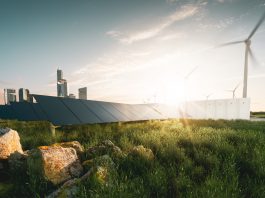Researchers at Penn State have developed a new technique for the environmentally friendly extraction and separation of rare earth elements.
Rare earth elements are a group of 17 metallic elements that are utilised in a wide range of applications, particularly high technology products like smartphones and electric car batteries.
The researchers’ novel method enhances the extraction and separation of these elements from alternative sources, including industrial waste and electronic waste.
Ensuring sustainable extraction methods
A group of scientists from Penn State and Lawrence Livermore National Laboratory (LLNL) have revealed how a protein isolated from bacteria can deliver a more sustainable way to extract these metals and separate them from other metals and each other. The technique could ultimately be scaled up to assist the development of a domestic supply of rare earth metals from industrial waste and electronics due to be recycled.
“In order to meet the increasing demand for rare earth elements for use in emerging clean energy technologies, we need to address several challenges in the supply chain,” explained Joseph Cotruvo Jr., assistant professor and Louis Martarano Career Development Professor of Chemistry at Penn State, a member of Penn State’s Center for Critical Minerals, and co-corresponding author of the study. “This includes improving the efficiency and alleviating the environmental burden of the extraction and separation processes for these metals. In this study, we demonstrate a promising new method using a natural protein that could be scaled up to extract and separate rare earth elements from low-grade sources, including industrial wastes.”
Creating a domestic supply of rare earth elements
At present, the US imports the majority of its rare earth elements. Therefore, a new focus has been placed on developing a domestic supply from alternative sources, such as industrial waste from burning coal and mining other metals, on top of electronic waste from cell phones and other materials.
These sources are extensive but regarded as ‘low grade,’ as the rare earth elements are combined with other metals and the amount of rare earths present is too low for conventional processes to work well. Additionally, current techniques for extraction and separation are dependent on harsh chemicals, are labour intensive, often entail hundreds of steps, produce a high volume of waste, and are expensive.
Discovering lanmodulin protein
The researchers’ novel technique utilises a bacterial protein known as lanmodulin, which was previously discovered by the research team. The protein is almost a billion times better at binding to rare earth elements than to other metals.
The protein is first immobilised onto tiny beads within a column — a vertical tube frequently used in industrial processes — to which the liquid source material is added. The protein then binds to the rare earth elements in the sample, which enables only the rare earths to be retained in the column and the remaining liquid drained off. Then, by changing the conditions, the metals unbind from the protein and can be drained and collected. By carefully changing the conditions in sequence, individual rare earth elements could be separated.
“We first demonstrated that the method is exceptionally good at separating the rare earth elements from other metals, which is essential when dealing with low-grade sources that are a hodgepodge of metals to start with,” added Cotruvo. “Even in a very complex solution where less than 0.1% of the metals are rare earths — an exceedingly low amount — we successfully extracted and then separated a grouping of the lighter rare earths from a grouping of the heavier rare earths in one step. This separation is an essential simplifying step because the rare earths have to be separated into individual elements to be incorporated into technologies.”
Separating yttrium and neodymium
The research team separated yttrium (Y) from neodymium (Nd) — which are both abundant in primary rare earth deposits and coal by-products — with over 99% purity. As well as this, they separated neodymium from dysprosium (Dy) — a crucial pairing that is common in electronic waste — with more than 99.9% purity in just one or two cycles, depending on the initial metal composition.
“The high-purity of the recovered neodymium and dysprosium is comparable to other separation methods and was accomplished in as many or fewer steps without using harsh organic solvents,” said Ziye Dong, postdoctoral researcher at LLNL and first author of the study. “Because the protein is able to be used for many cycles, it offers an attractive eco-friendly alternative to the methods currently used.”
Rare earth elements from low-grade sources
The researchers do not believe their technique will necessarily supplant the current liquid-liquid extraction process that is commonly used for high-volume production of lighter rare earth elements from high-grade sources, but rather, it will facilitate the effective utilisation of low-grade sources and especially for extraction and separation of the rarer and more valuable heavy rare earths.
“Other recent methods are capable of extracting rare earth elements from low-grade sources, but they typically stop at a ‘total’ product that has all the rare earths lumped together, which has relatively little value and then needs to be funnelled into more conventional schemes for further purification of individual rare earth elements,” commented Dan Park, staff scientist at LLNL and co-corresponding author of the study. “The value is really in the production of individual rare earths and especially the heavier elements.”
“Our process is particularly convenient because these high-value metals can be purified off the column first,” added Cotruvo.
Going forward, the team plans to enhance the technique so fewer cycles are necessary to acquire the highest-purity products, and it can be scaled up for industrial use.
“If we can engineer derivatives of the lanmodulin protein with greater selectivity for specific elements, we could recover and separate all 17 rare earth elements in a relatively small number of steps, even from the most complex mixtures, and without any organic solvents or toxic chemicals, which would be a very big deal,” concluded Cotruvo. “Our work shows that this goal should be achievable.”









